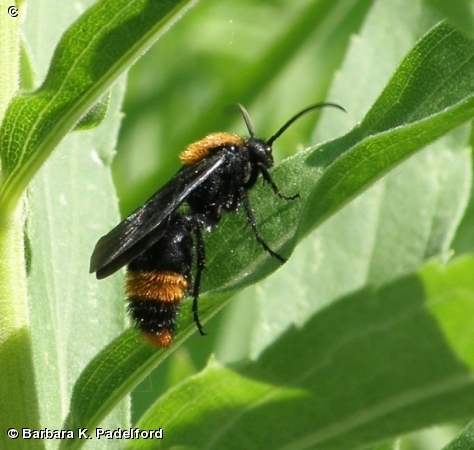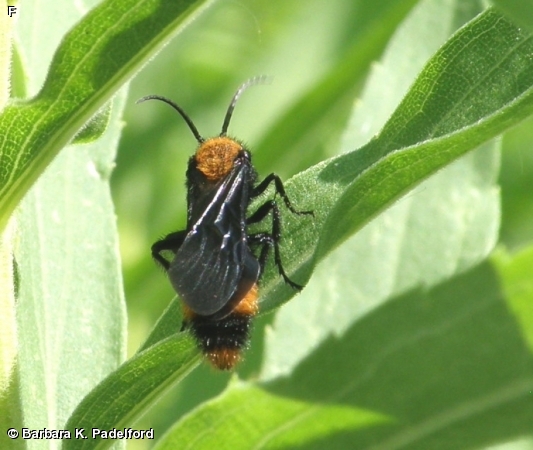
Females of this wasp are flightless and approximately 3/4 inch or 20 mm long. The head, thorax and abdomen are bright red and furry looking. The abdomen has two prominent black bands. The antennae and legs are black. The males are about an inch or 25 mm long. The face, wings, antennae and legs are black. The top of the thorax is red and furry. The abdomen is black with two red bands. Individuals within a species vary in size depending on the size of the larval host.
This wasp is commonly found around the parking lot of the Nature Center at Fontenelle Forest when their hosts Cicada Killer wasps are flying in August. They lay eggs in the nests of Cicada Killer wasps where their offspring will parasitize the wasp larva. Look for females running around the planted islands and pavement of the parking lot, and flower beds and sidewalks around the Nature Center. Look for males flying low around areas frequented by females and Cicada Killers. They also have been seen on the dam in Child’s Hollow around Cicada Killers.
These are solitary wasps. Another common name is Cow Killer. The wingless females have a long stinger and are reputed to have a very painful sting. They are parasites of insects, usually other wasps or solitary bees. This species of Velvet Ant is diurnal. Both genders can “squeak” by rubbing their abdominal segments together. Other insects such as some ground beetles and checkered beetles appear to mimic velvet ants.
The content of NatureSearch is provided by dedicated volunteer Naturalists of Fontenelle Forest who strive to provide the most accurate information available. Contributors of the images retain their copyrights. The point of contact for this page is: Loren Padelford.






